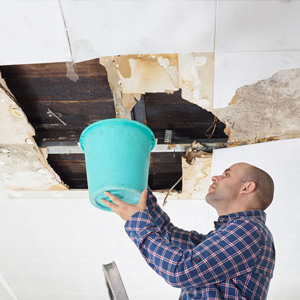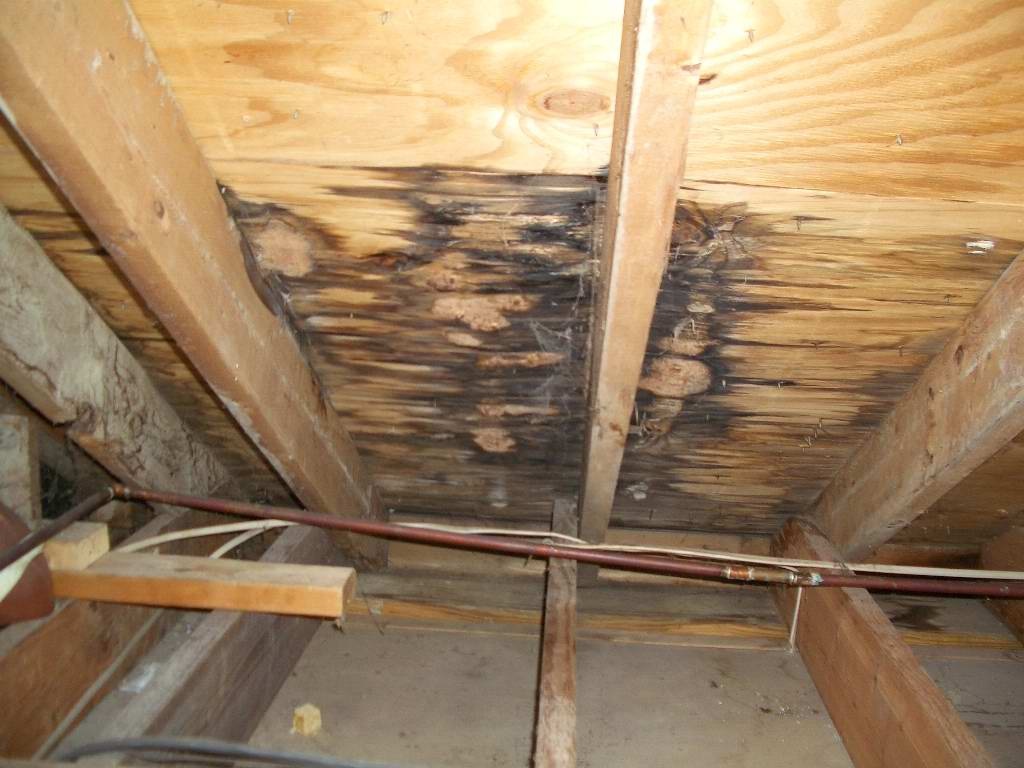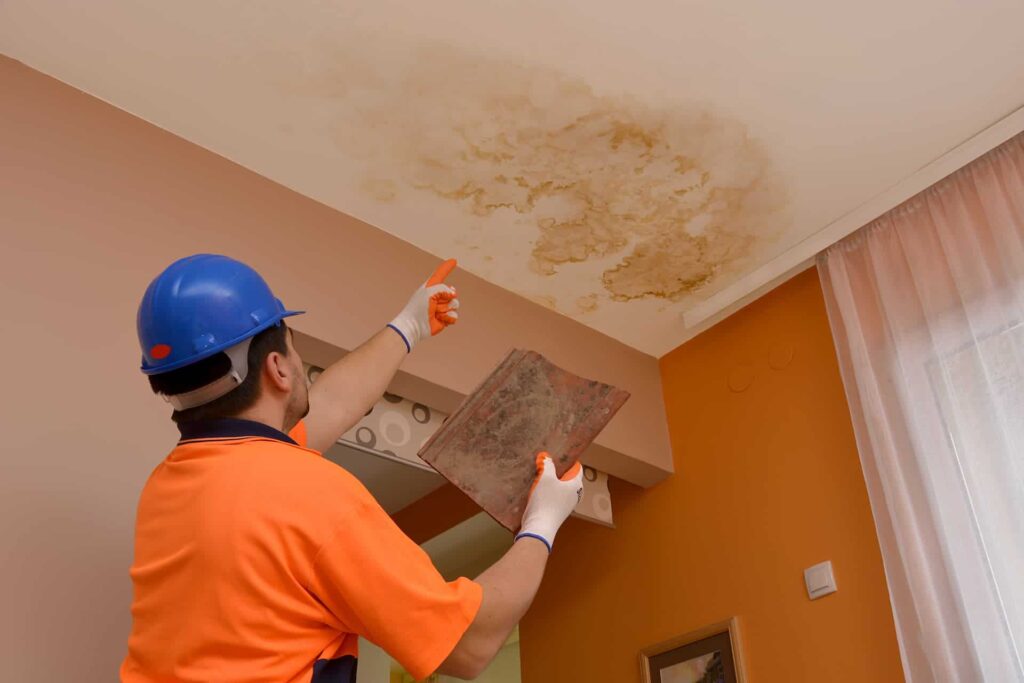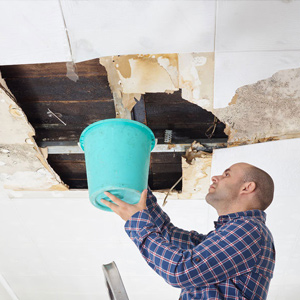Are you tired of dealing with a leaking roof but hesitant about the cost and time-consuming process of repairing it from the outside? Fortunately, there might be a solution you haven’t considered yet – repairing a leaking roof from the inside. While traditional methods involve replacing shingles or resealing the roof’s surface, tackling the issue from the inside can offer a practical and cost-effective alternative. In this article, we will explore the benefits, process, and considerations of repairing a leaking roof from the inside, providing you with a comprehensive guide to address this common household problem.

This image is property of www.pjfitz.com.
Preparation
Before you can start repairing a leaking roof, it is important to properly prepare. This involves three key steps: identifying the source of the leak, gathering necessary materials, and ensuring safety measures are in place.
Identify the source of the leak
The first step in repairing a leaking roof is to identify where the leak is coming from. This can often be determined by locating the area where water is dripping or by tracing the water stains back to their origin. It is essential to accurately identify the source of the leak to properly address the issue and prevent further damage.
Gather necessary materials
Once you have identified the source of the leak, it is important to gather all the necessary materials for the repair. This may include roofing cement, roof tape, a roof patch kit, replacement shingles, flashing materials, sealing compounds, insulation, and drywall or ceiling repair supplies. Having all the materials on hand before starting the repair will help ensure a smooth and efficient process.
Ensure safety measures are in place
Repairing a leaking roof can be dangerous, especially if working at heights or dealing with water damage. Before starting any repairs, it is crucial to prioritize safety. This may involve using proper safety equipment such as gloves, goggles, and a helmet, as well as working with a partner for added support and assistance. It is also important to take precautions to prevent falls, such as using a sturdy ladder and securing it properly.
Temporary Fixes
While permanent repairs should always be the goal when dealing with a leaking roof, sometimes temporary fixes are necessary to prevent further damage until a more permanent solution can be implemented.
Use roofing cement
Roofing cement is a commonly used temporary fix for minor leaks. It is a thick, paste-like substance that can be applied directly to the area where the leak is occurring. Roofing cement acts as a barrier, preventing water from seeping through and providing a temporary waterproof seal. However, it is important to note that roofing cement is not a long-term solution and should only be used as a temporary fix.
Apply roof tape
Roof tape is another temporary fix that can be used to seal leaks. Made of a combination of adhesive and waterproof material, roof tape can be applied directly over the area where the leak is occurring. It forms a strong and durable seal that prevents water from entering. Roof tape is an effective temporary solution for small to medium-sized leaks, but it is important to address the underlying issue to prevent further damage.
Utilize a roof patch kit
For larger leaks or more extensive damage, a roof patch kit can be a useful temporary fix. Roof patch kits typically include materials such as roofing fabric and mastic, which can be applied to the damaged area to create a waterproof seal. These kits are designed to provide a temporary solution until a proper repair can be made. However, it is important to note that roof patch kits are not always effective for long-term repairs and should be used with caution.
Permanent Solutions
While temporary fixes can be helpful in preventing further damage, it is essential to implement permanent solutions to fully address a leaking roof. Here are some permanent solutions to consider:
Replace damaged shingles
If the source of the leak is a damaged or missing shingle, replacing it is a permanent solution. Start by removing the damaged shingle and cleaning the area. Then, install a new shingle in its place, making sure to secure it properly with roofing nails. This will not only fix the immediate leak but also prevent future leaks in that area.
Repair flashing
Flashing, which is typically made of metal or other weatherproof materials, is used to create a watertight seal around roof penetrations such as chimneys, vents, and skylights. If the flashing is damaged or deteriorated, it can cause leaks. Repairing the flashing involves removing the damaged section and replacing it with new flashing material. This will effectively seal the area and prevent further leaks.
Seal roof vents
Roof vents are essential for proper ventilation in your attic, but they can also be a source of leaks if not properly sealed. Inspect the roof vents for any signs of damage, such as cracks or gaps, and apply a sealing compound or roof sealant to create a watertight seal. This will prevent water from entering through the vents and causing leaks.
Internal Repairs
While most roof repairs are focused on the exterior, it is important to also address any internal damage caused by a leaking roof. This involves inspecting the attic for damage, addressing insulation issues, and repairing the ceiling or drywall.
Inspect attic for damage
Water from a leaking roof can seep into the attic, causing damage to the structure and any stored items. Once you have repaired the source of the leak, it is crucial to inspect the attic for any signs of damage, such as water stains, mold growth, or weakened support beams. If any damage is found, it should be repaired promptly to prevent further structural issues.
Address insulation issues
Water damage can also affect the insulation in your attic, reducing its effectiveness and leading to higher energy bills. Inspect the insulation for any signs of water damage and replace any damaged sections. Ensuring proper insulation will help maintain a comfortable indoor temperature and prevent future leaks due to ice damming or condensation.
Repair ceiling or drywall
If water has leaked into your living space, it is important to repair any damage to the ceiling or drywall. This may involve removing and replacing damaged sections, applying joint compound and sanding, and repainting the affected area. Repairing the interior damage will not only restore the aesthetics of your home but also prevent further issues such as mold growth and structural damage.

This image is property of theroofdoctor.com.au.
Professional Assistance
While many leaking roof repairs can be done as DIY projects, there are some situations where it is essential to seek professional assistance. Here are a few instances where professional help should be considered:
Consult a roofing contractor
If you are not comfortable or experienced with roofing repairs, it is strongly recommended to consult a roofing contractor. A professional contractor will have the expertise and knowledge to accurately diagnose the issue, provide the most effective solutions, and ensure the repairs are done correctly. Additionally, a roofing contractor may offer warranties on their work, providing you with peace of mind.
Hire a professional handyman
For minor roof repairs that do not require specialized knowledge, hiring a professional handyman can be a cost-effective option. A handyman can assist with tasks such as replacing damaged shingles, applying roofing cement or tape, and addressing minor flashing issues. However, it is important to ensure that the handyman is qualified and experienced in roofing repairs to avoid any further damage or complications.
Contact a water damage restoration company
If your leaking roof has caused significant water damage to your home, it may be necessary to contact a water damage restoration company. These professionals specialize in mitigating water damage, drying affected areas, and preventing mold growth. They have the equipment and expertise to handle complex water damage situations and can help restore your home to its pre-damaged condition.
Preventing Future Leaks
Once you have addressed the immediate repairs and fixed the leaking roof, it is essential to take preventive measures to avoid future leaks. Here are some steps you can take to prevent future roof leaks:
Regularly inspect the roof
Performing regular inspections of your roof can help you identify and address potential issues before they become major problems. Inspect your roof at least twice a year, in the spring and fall, and after severe weather events. Look for signs of damage such as cracked or missing shingles, damaged flashing, or lifted roof vents. If any issues are found, address them promptly to prevent leaks.
Keep gutters clean and clear
Clogged gutters can cause water to overflow and seep under the shingles, leading to leaks. Regularly clean your gutters to remove leaves, twigs, and other debris. Consider installing gutter guards or screens to prevent clogs and facilitate proper water drainage. Keeping your gutters clean and clear will help ensure that water is effectively directed away from your roof.
Trim overhanging branches
Overhanging tree branches can cause damage to your roof, especially during storms or high winds. Trim any branches that are hanging over or touching your roof to prevent them from rubbing against the shingles or causing physical damage. Additionally, removing overhanging branches will help reduce the amount of debris that can accumulate on your roof and in your gutters.

This image is property of roofclaim.com.
Conclusion
Repairing a leaking roof requires proper preparation, temporary fixes, permanent solutions, internal repairs, and preventive measures. By following the outlined steps and investing time and effort into addressing the issue promptly and effectively, you can ensure the longevity and functionality of your roof. Remember, when in doubt or dealing with extensive damage, it is always advisable to seek professional assistance to avoid further complications and ensure the safety and integrity of your home.
